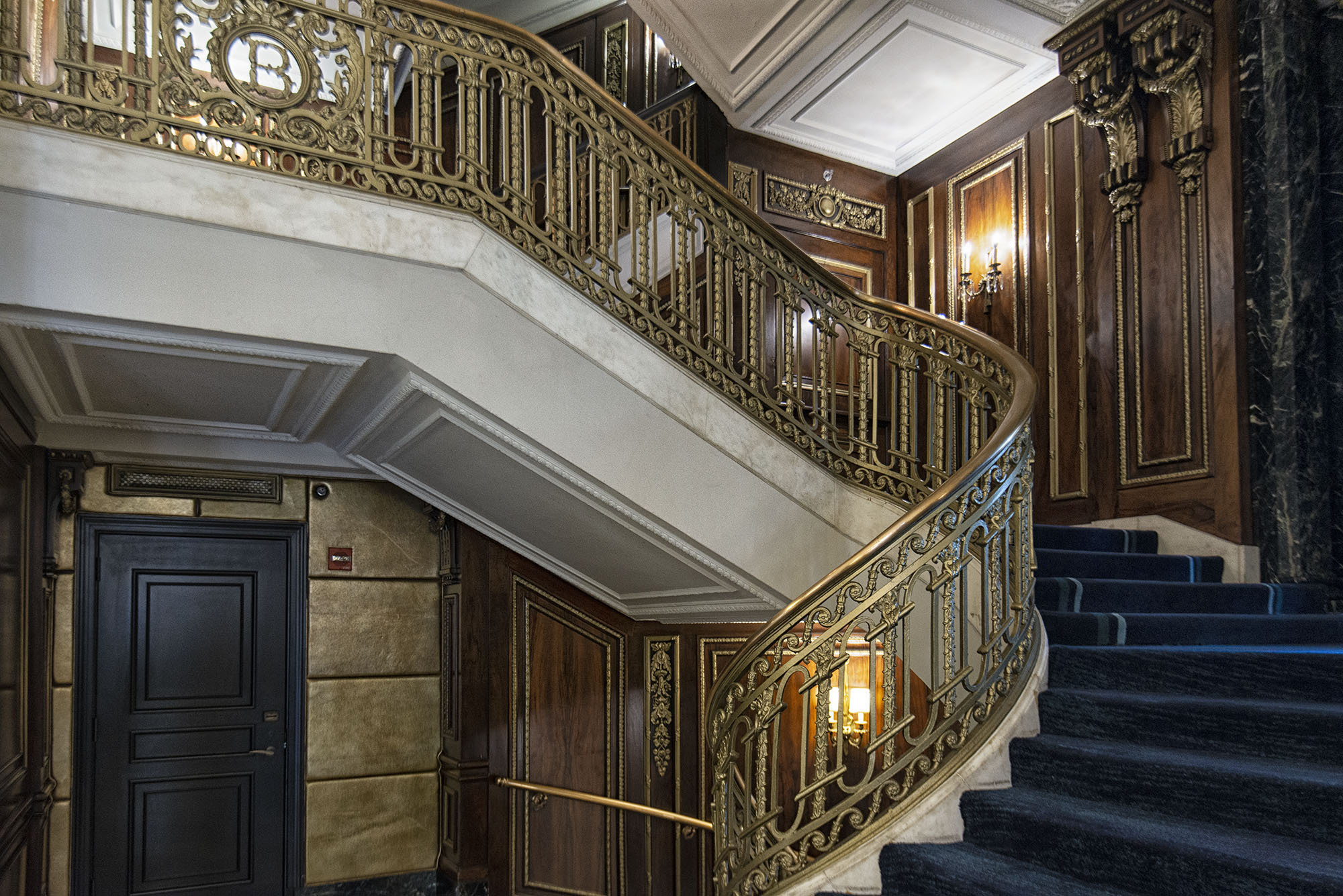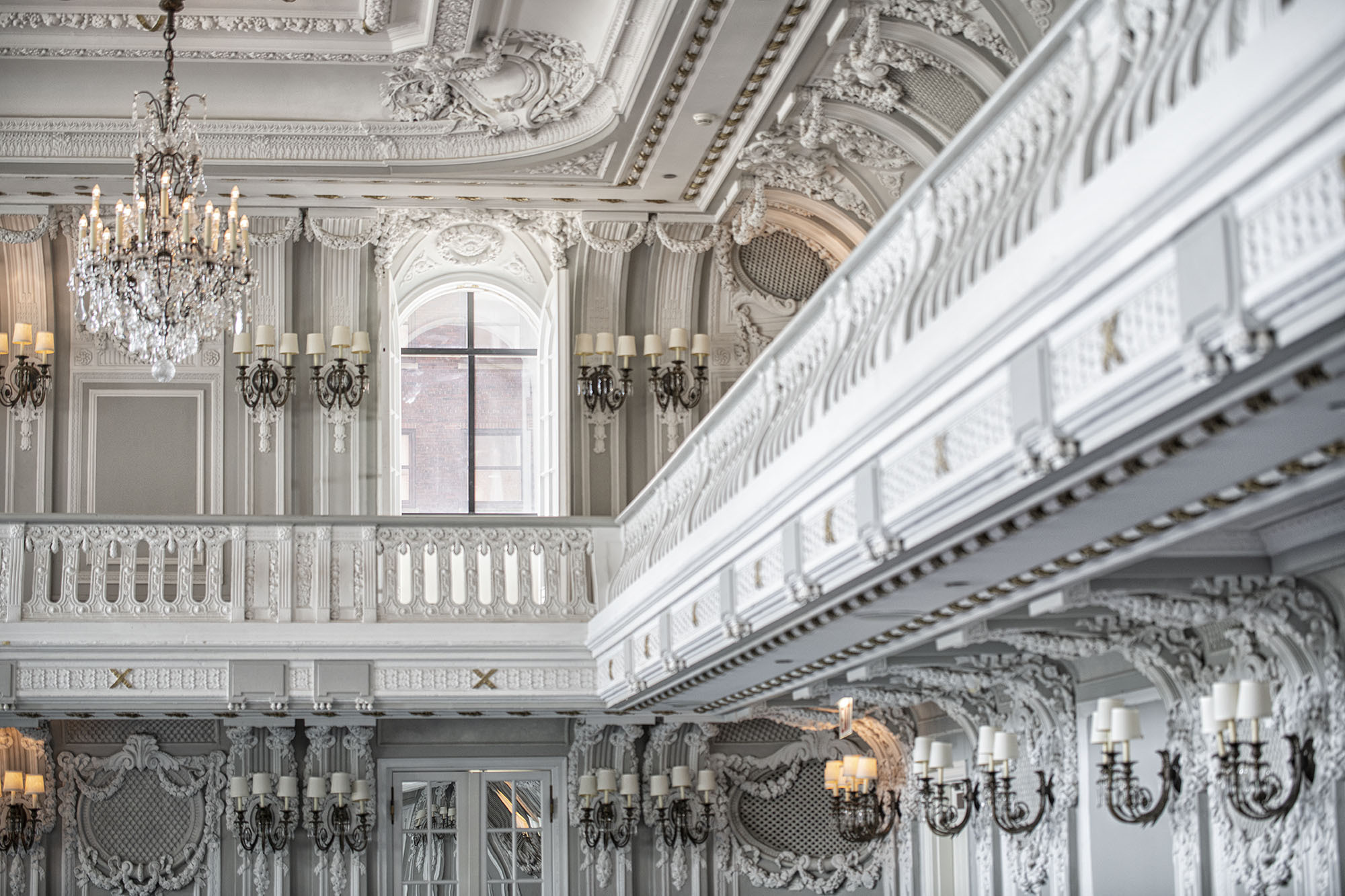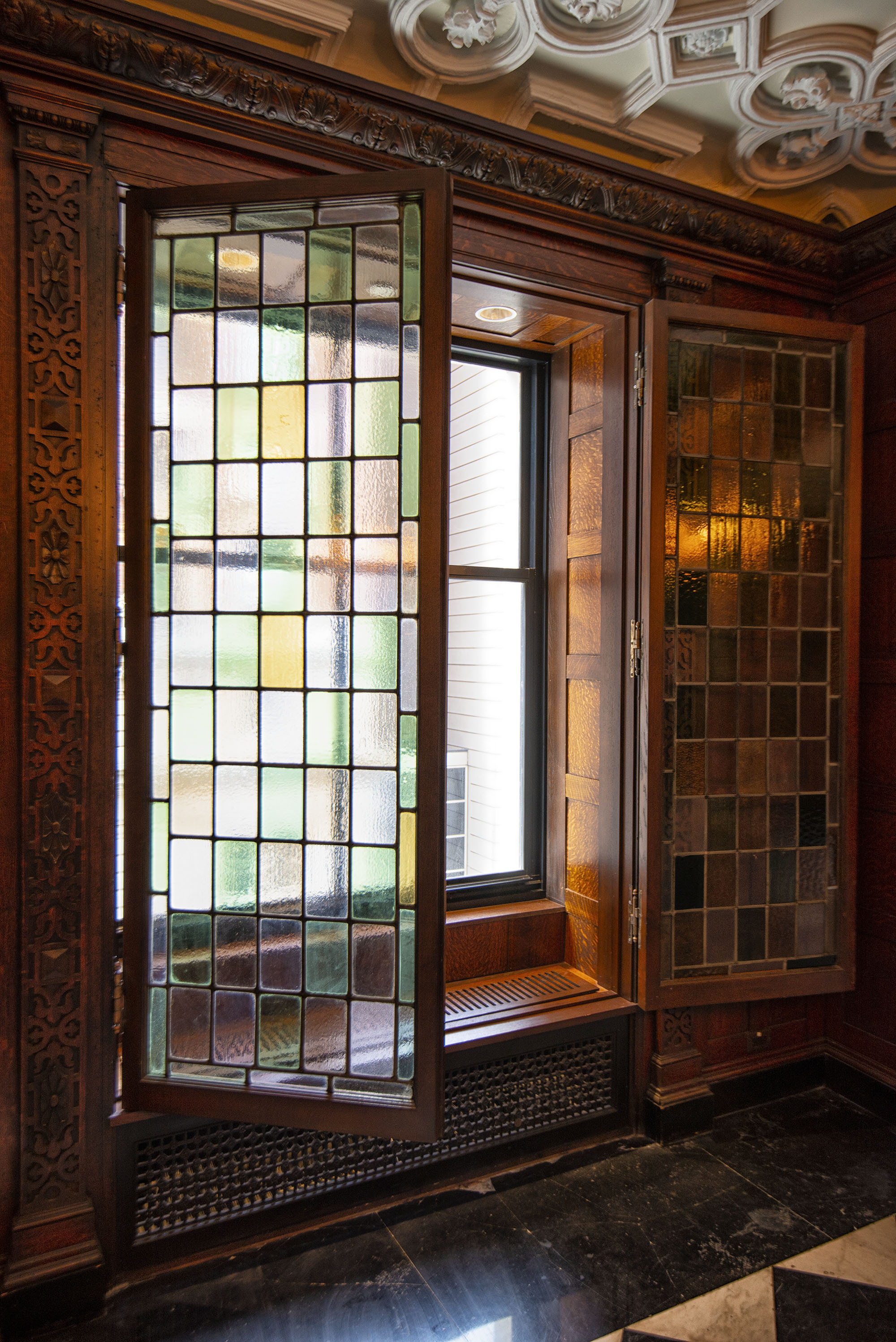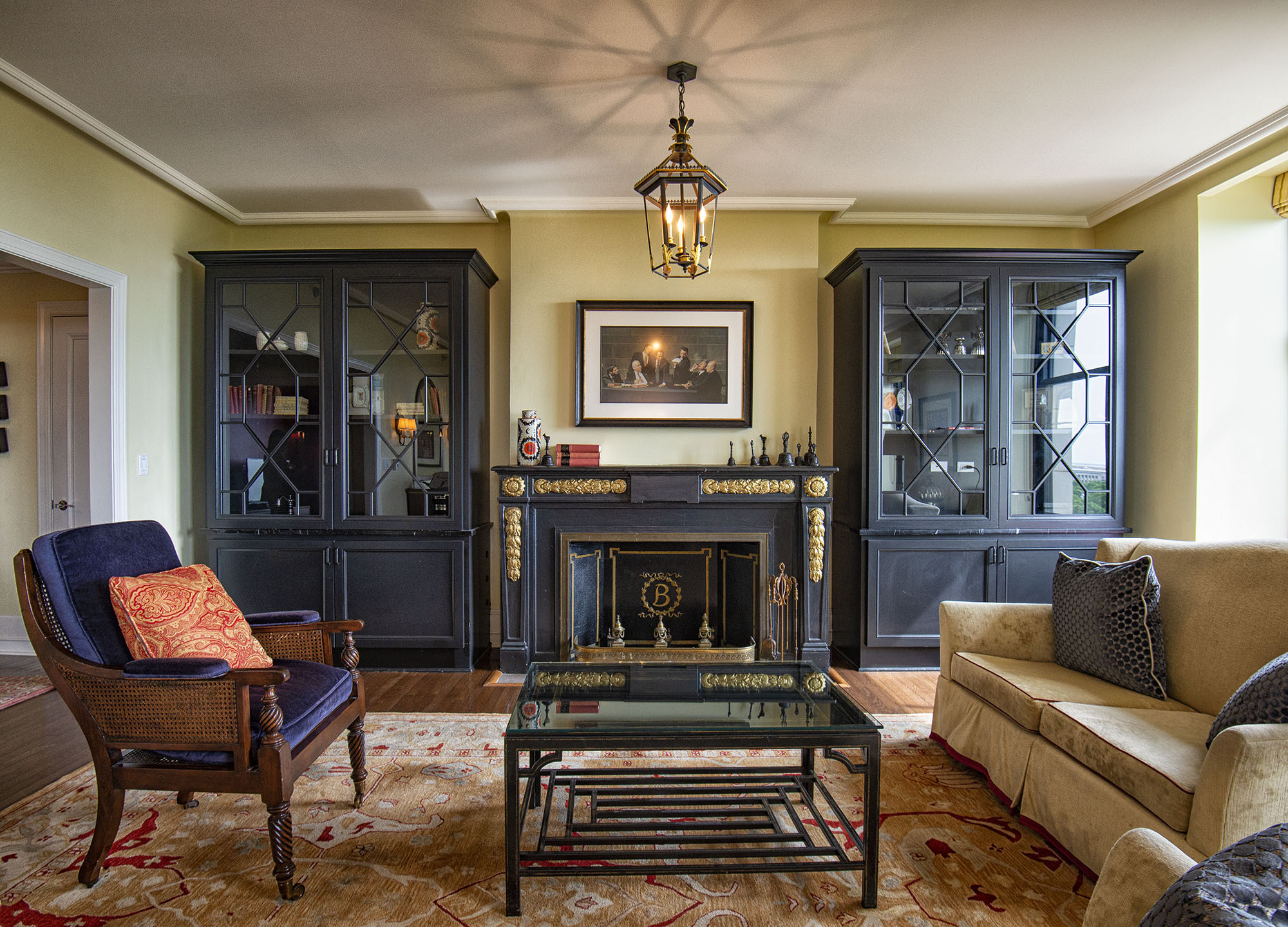Lots of Chicago-area buildings make you stop and ask: “What’s that building?” WBEZ’s Reset is collecting the stories behind them! You can also find them on this map.
The slender, green-topped Blackstone Hotel has commanded a corner of Michigan Avenue and Balbo Street since 1910.
The French-inspired grandeur is visible from the carved flower garlands on its lower floors to its rounded mansard roof.
Inside, there’s the same sense of old-time grandeur. Along with 335 guest rooms and a street-level restaurant space, the lobby is trimmed with brass rails and plaster ceilings.
A lavish ballroom overlooking Grant Park is a French confection of plaster, chandeliers and mirrors.


One of the most interesting rooms in the hotel, located at 636 S. Michigan Ave., is a basement-level conference room that used to be the barber shop. It is a fancy place, with a fountain, carved pillars and a big brass wall clock. Also intact: circular oil stains on the floor where barber chairs used to sit.
Richard Nixon got his haircut here, and legend says that Al Capone held meetings during trims, too -- but that hasn't been proven.
Another conference room is known as the English room.

Place of political power
Even casual students of Chicago history know that The Blackstone is where the idea of politicians cutting deals in smoke-filled rooms was born.
During the Republican Party’s June 1920 convention, 13 men were vying to get the party’s presidential nomination. Warren G. Harding finally got the nod after a six-hour meeting in party chairman Will Hayes’s suite. An Associated Press reporter wrote that it all happened in a smoke-filled room -- and the image of cigar-chomping power brokers playing politics stuck.
Thirteen presidents have stayed in the hotel, according to Caryn Granzow, the hotel’s director of sales. They included Harry Truman, who had a piano moved into the presidential suite and played it for a gathering of the hotel’s waiters, reported the Chicago Tribune in 1968.

Richard Nixon considered The Blackstone his “lucky hotel,” because he was staying there in 1960 when he got nominated for vice president. Two years later, President John F. Kennedy was staying at The Blackstone when the Cuban Missile Crisis began, and he faked a cold so he could rush back to Washington D.C. instead of continuing a Midwestern tour supporting Democratic candidates.
There’s another White House resident whose stay at The Blackstone is noteworthy: Eleanor Roosevelt. In 1942, the U.S. Army’s Counter Intelligence Corps secretly recorded the 57-year-old First Lady and a 33-year-old man, Joseph Lash, in her room. The CIC agents reported that the tape “indicated quite clearly that Mrs. Roosevelt and Lash engaged in sexual intercourse during their stay in the hotel room,” according to the biography Roosevelt’s Secret War. Other accounts say the CIC report may have mixed up a platonic meeting between Elenor and Lash with a liaison Lash had with his future wife a week later.
Either way, after Eleanor was told about the bugging by hotel staff, she complained to the president and he had the Counter Intelligence Corps shut down. Joseph Lash remained a friend, and, in 1971, he wrote the book Eleanor and Franklin, which won the Pulitzer Prize.
Roots in Stockyards wealth
The hotel’s name comes from the building that preceded it on the site. Timothy Blackstone, a railroad executive and founding president of the Union Stockyards, and his wife, Isabella, had a mansion there. The Blackstone branch of the Chicago Public Library and Blackstone Avenue are also named after the couple.
Widowed Isabella sold it in 1900. The buyers, John and Tracy Drake, replaced it in 1910 with a hotel designed by the architecture firm Marshall and Fox. (Ten years later, the same hoteliers and architects teamed up again to build The Drake Hotel on the Gold Coast.)

The elegant Blackstone was such a hit that the Drakes planned to build a second tower to its west, with the Blackstone Theater (now the Merle Reskin Theatre of DePaul University) between them. It never got built, and that space is now a parking lot.
Although it’s not part of the hotel anymore, the Blackstone Theater has a historical high point: Chicagoan Lorraine Hansberry’s A Raisin in the Sun, a groundbreaking play about segregation, debuted at the Blackstone in 1959. It went on to be the first play by an African-American woman performed on Broadway.
In 1995 — when South Michigan Avenue's ritzy heyday was long past and the renaissance of downtown Chicago hadn’t yet ignited — the Maharishi Mahesh Yogi bought the tired old Blackstone Hotel.
The guru, who famously taught The Beatles transcendental meditation, was developing a chain of hotels. Called Heaven on Earth, they featured vegetarian food and transcendental meditation classes. A few years later, the Maharishi’s people announced a plan to turn the building into condos, a plan that failed. The building sat unused for several years before reopening under the present owners in 2008.
The Blackstone went up for sale in April. There’s no published price tag, common with commercial properties like this, but think of what the buyer will get: a hotel filled with more history than you’d think one 22-story building could hold.
Dennis Rodkin is a real estate reporter for Crain’s Chicago Business and Reset’s “What’s That Building?” contributor.






